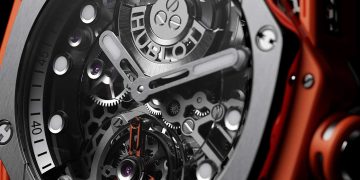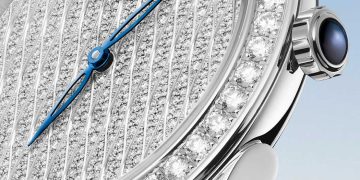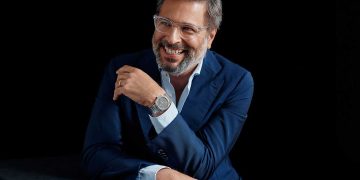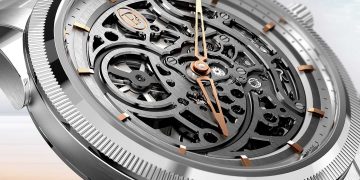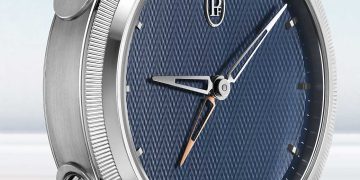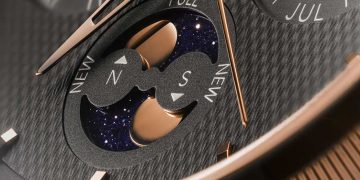BREITLING STAGES AN EXTRAORDINARY FORMATION FLIGHT FOR THE LAUNCH OF ITS NEW SUPER AVI WATCH COLLECTION
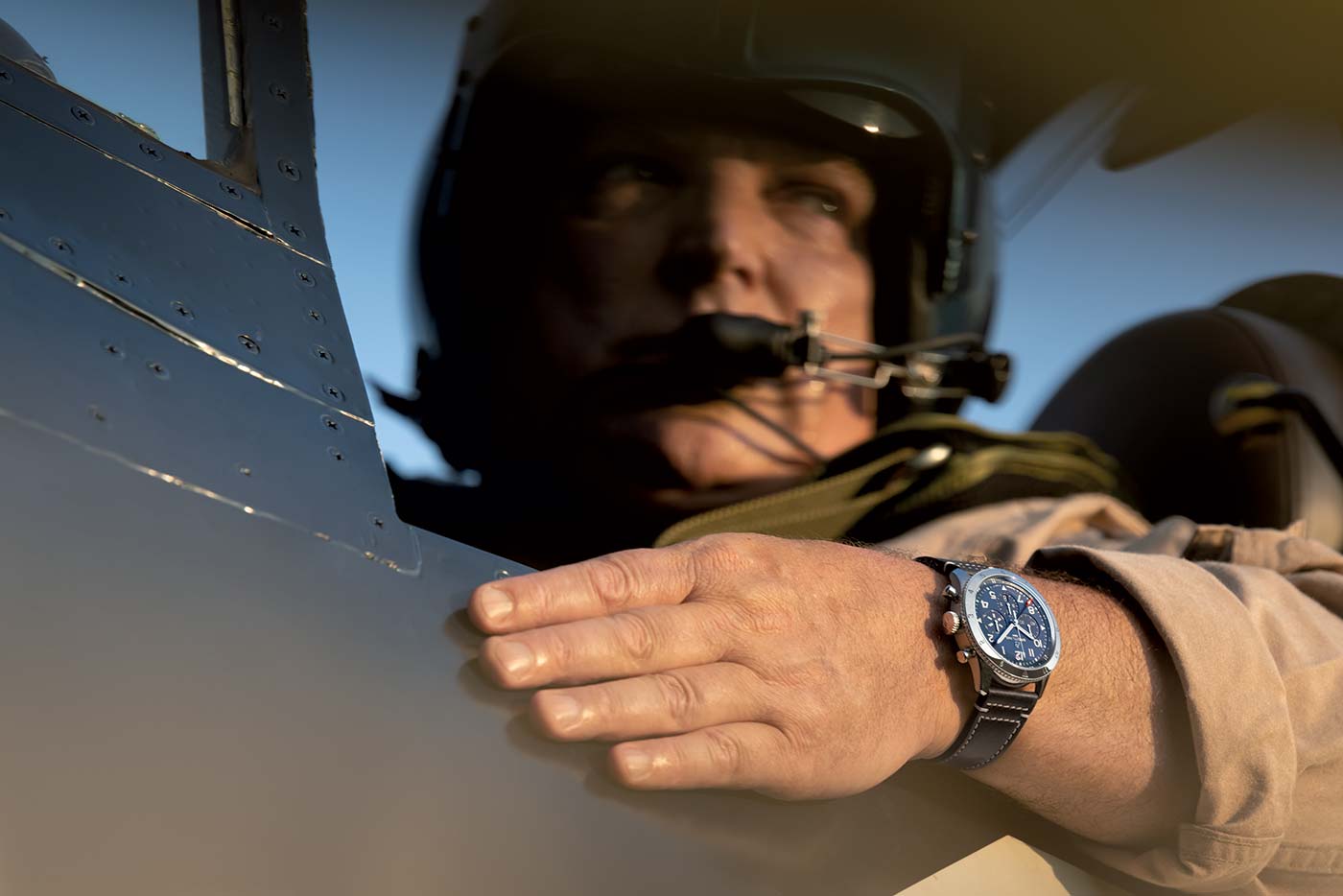
Four vintage planes took to the sky in a dramatic air-to-air campaign photoshoot that was a first for the aircraft. Breitling’s tribute collection to the North American Aviation P-51 Mustang, Vought F4U Corsair, de Havilland Mosquito, and Curtiss P-40 Warhawk led to the monumental flight.
To mark Breitling’s launch of the new Super AVI collection, a new watch series dedicated to four legendary vintage aircraft, Breitling brought the four planes together for an epic campaign photoshoot. The highly technical flight did more than just result in spectacular footage, it was history-making.
The planes are the North American Aviation P-51 Mustang, the best all-around fighter of the WWII era; the Vought F4U Corsair, a record-breaking naval aircraft; the extremely rare de Havilland Mosquito, known as the “Wooden Wonder”, and the Curtiss P-40 Warhawk, a master of agility whose signature shark-mouth nose art has made it a poster child for the daredevil days of early aviation.
On August 13, 2021, pilots Raymond Fowler (North American Aviation Mustang), John Fuentes (Vought 4FU Corsair), Mike Spalding (de Havilland Mosquito), and Taylor Stevenson (Curtiss P-40 Warhawk) took to the sky above Virginia Beach, flying in a tight formation that at times put them less than 10 feet apart at speeds of over 200 mph. It was the first time all four pilots had flown together and a first for these aircraft in this formation.
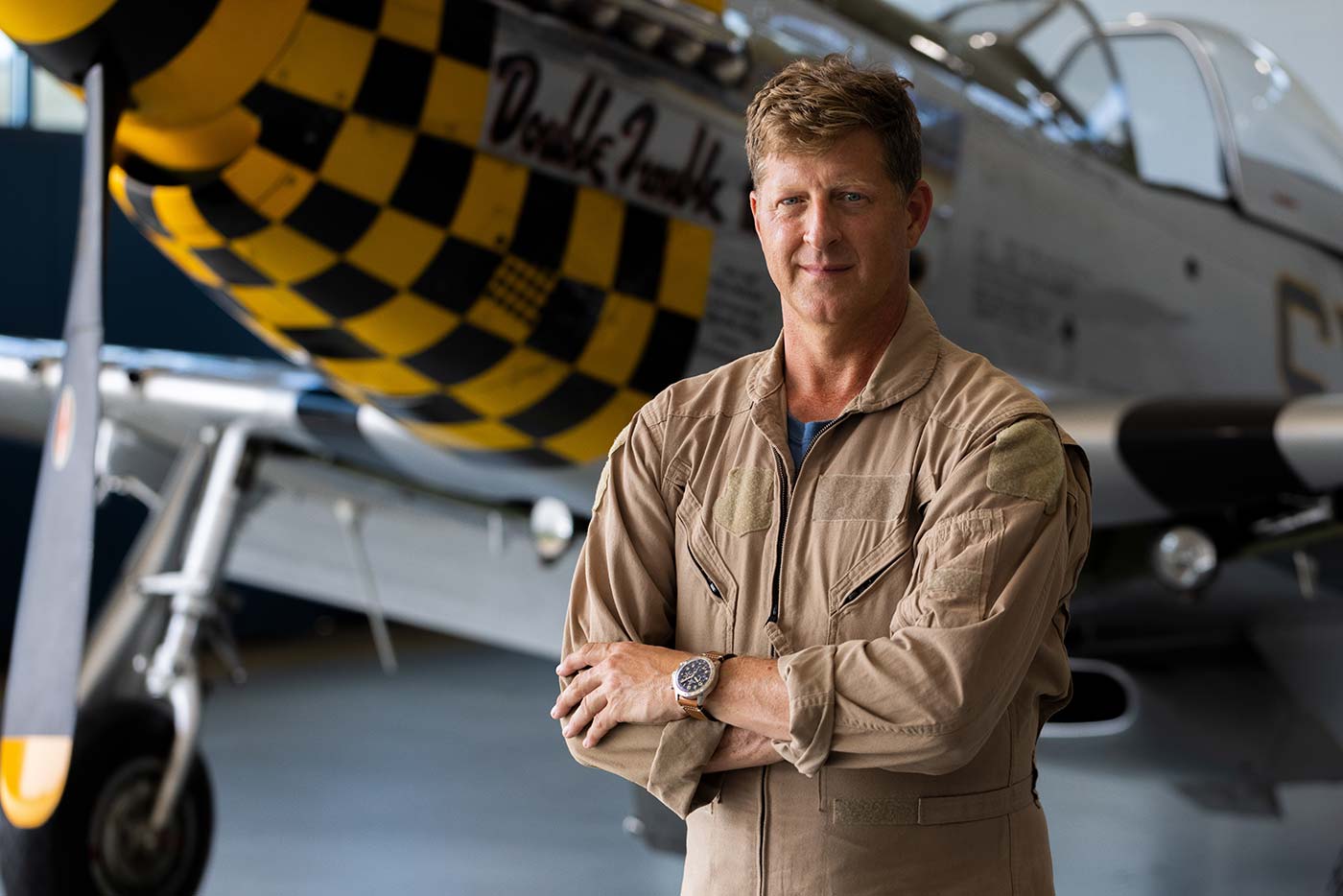
Even for the experienced warbird pilots, the flight was a thrill ride. “I had never flown with a Mosquito and it was such a cool thing,” says Stevenson. “Then I was inverted, looking up at Mustang and Corsair. I couldn’t believe it. These old aircraft are uncomfortable, cramped, the engines are loud, they are hot, but there’s nothing like them. They’re unmatched in terms of power. A small plane might have 300 horsepower today. The P-40 Warhawk has over 1,200. It’s like going from a compact car to a drag racer.”
Commandeering a vintage aircraft in a group requires a long list of qualifications, including a commercial pilot’s license, formation card, tail-wheel certification, aerobatics credentials, and hundreds of hours of flight time. The pilots drafted a complex flight plan in advance of the Breitling shoot to ensure the four aircraft not only worked as team, but also showed off their best angles to a fifth aircraft taking the air-to-air photographs.
To capture the planes at their best, aviation photographer Bradley Wentzel had to work quickly within the small window of “golden hour” morning light. “Each plane looked beautiful in its individually iconic paint scheme,” says Wentzel. “They are meticulously maintained inside and out and showed excellently for our cameras. You would never know they were decades old from the calculated adjustments needed for the formation, but the grand maneuvers the pilots could
perform in them were spectacular.”
The four planes took off from Virginia’s Military Aviation Museum (MAM), home to three of the four aircraft (the Warhawk flew in from the Cavanaugh Flight Museum in Addison, Texas). Even when optimally restored, these 75-to-80-year-old aircraft need up to 100 hours of preparation time for flight-readiness. At the MAM, mechanical teams adhere to original manuals, becoming, as museum director Keegan Chetwynd puts it, “a historian, researcher, and custodian of the aircraft. You have to feel a strong connection to the equipment to keep it flying.”
That expertise is crucial because original parts are increasingly scarce, as are the aircraft themselves. Though thousands of each plane were made, only a handful remain that can still fly—the rarest being the Mosquito, of which there are currently only four airworthy examples left. It’s monumental when even one of these aircraft leaves the ground, let alone all four.
“When they set off, it’s people’s hopes and dreams and ambitions for that machine,” says Chetwynd. “These planes are unwieldy on the ground. They look awkward as hell. But when they take off, all of that goes away. They do what they’re supposed to do. It’s smooth, and it’s beautiful.”
See the behind-the-scenes photography and video here. Explore Breitling’s new Super AVI collection, based on these four phenomenal aircraft, here.
FOUR PLANES, FOUR PILOTS, FOUR TRIBUTE TIMEPIECES
The North American Aviation P-51 Mustang, flown by Ray Fowler, wearing the Super AVI P-51 Mustang
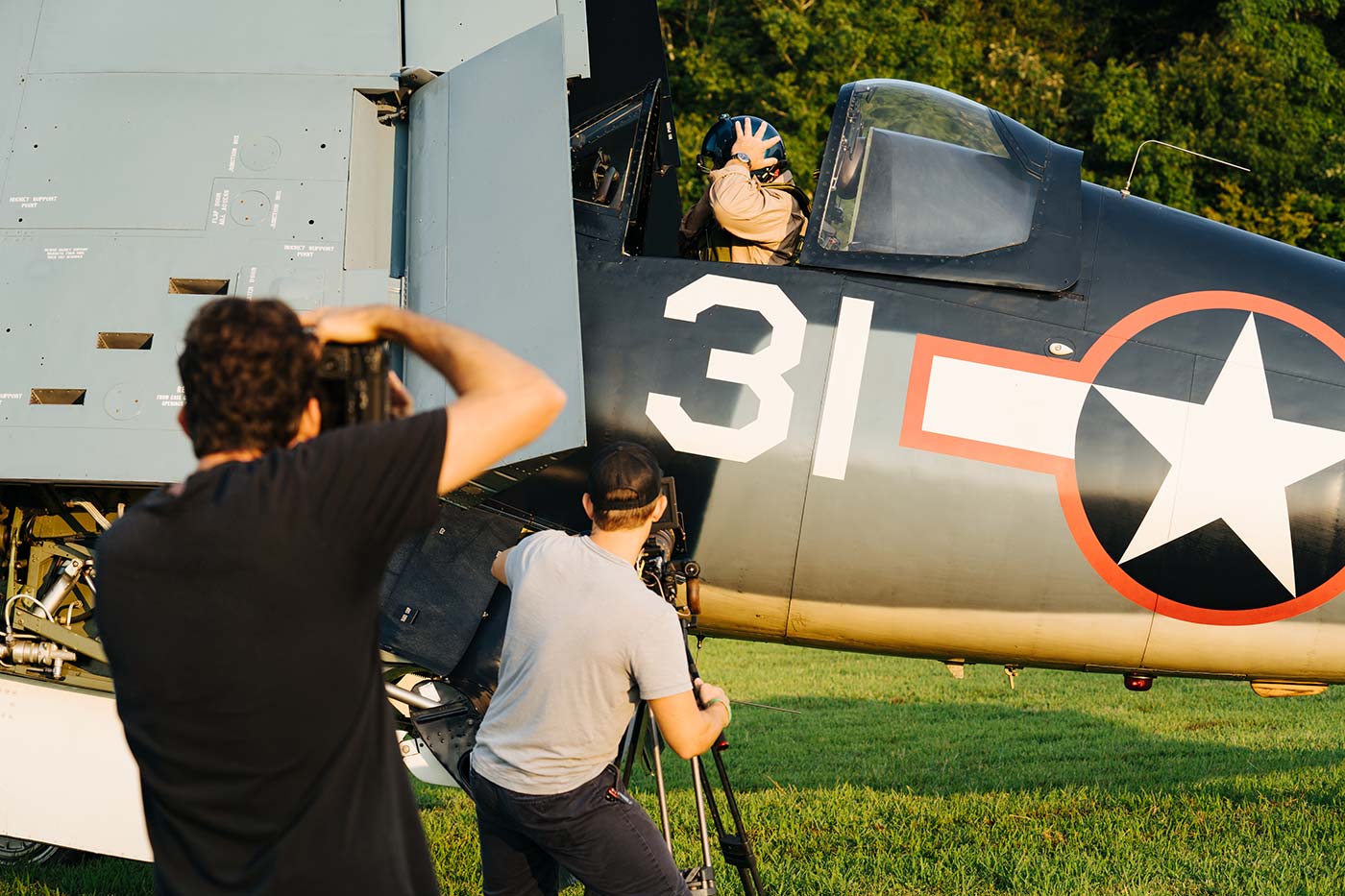
When the P-51 Mustang was built in a mere 120 days, even its developer, North American Aviation, didn’t anticipate what a powerhouse it had on its hands. The P-51’s low-drag wings and enginecooling system—considered experimental when the single-seat fighter first took off in 1940— gave it unprecedented speed and range. The addition of a Merlin engine expanded the plane’s performance to high altitudes, making it the best all-purpose fighter of its time. Ray Fowler serves as a civilian airline and military pilot with over 15,000 flying hours. His passion, however, is for airshows, where he flies a variety of historic fighter and bomber aircraft.
The Vought F4U Corsair, flown by John Fuentes, wearing the Super AVI Tribute to Vought F4U Corsair
As a WWII naval aircraft, the Vought F4U Corsair had to make tricky takeoffs and landings from carriers and remote landing strips. Speed and lift were of the essence, and the Corsair came through with flying colors, becoming the first single-engine fighter to crack the 400 mph (640 km/h) mark, while also providing an exceptional rate of climb. Its “bent-wing” design, oversized propeller, and signature blue livery make it an emblem of aviation history. John Fuentes started flying warbirds in 1992 and has flown several vintage military aircraft. He flies internationally as a captain for a major airline and has over 25,000 flight hours.
The de Havilland Mosquito, flown by Mike Spalding, wearing the Super AVI Mosquito In an era when aluminum and steel shortages were common, the engineers behind the de Havilland Mosquito made use of a still plentiful material: wood. The “Wooden Wonder” caused shock waves when it outperformed its metal contemporaries to become one of the fastest planes built between 1940 and 1950. Its superior maneuverability allowed it to multitask in roles as far-ranging as light bomber, night fighter, transport and photographic reconnaissance aircraft.
Mike Spalding is a corporate pilot and a warbird demonstration pilot for the MAM. He soloed at 16 and has flown more than 150 types of aircraft (many of them on their first flights after restoration), clocking up more than 15,000 hours.
The Curtiss P-40 Warhawk, flown by Taylor Stevenson wearing the Super AVI Curtiss Warhawk
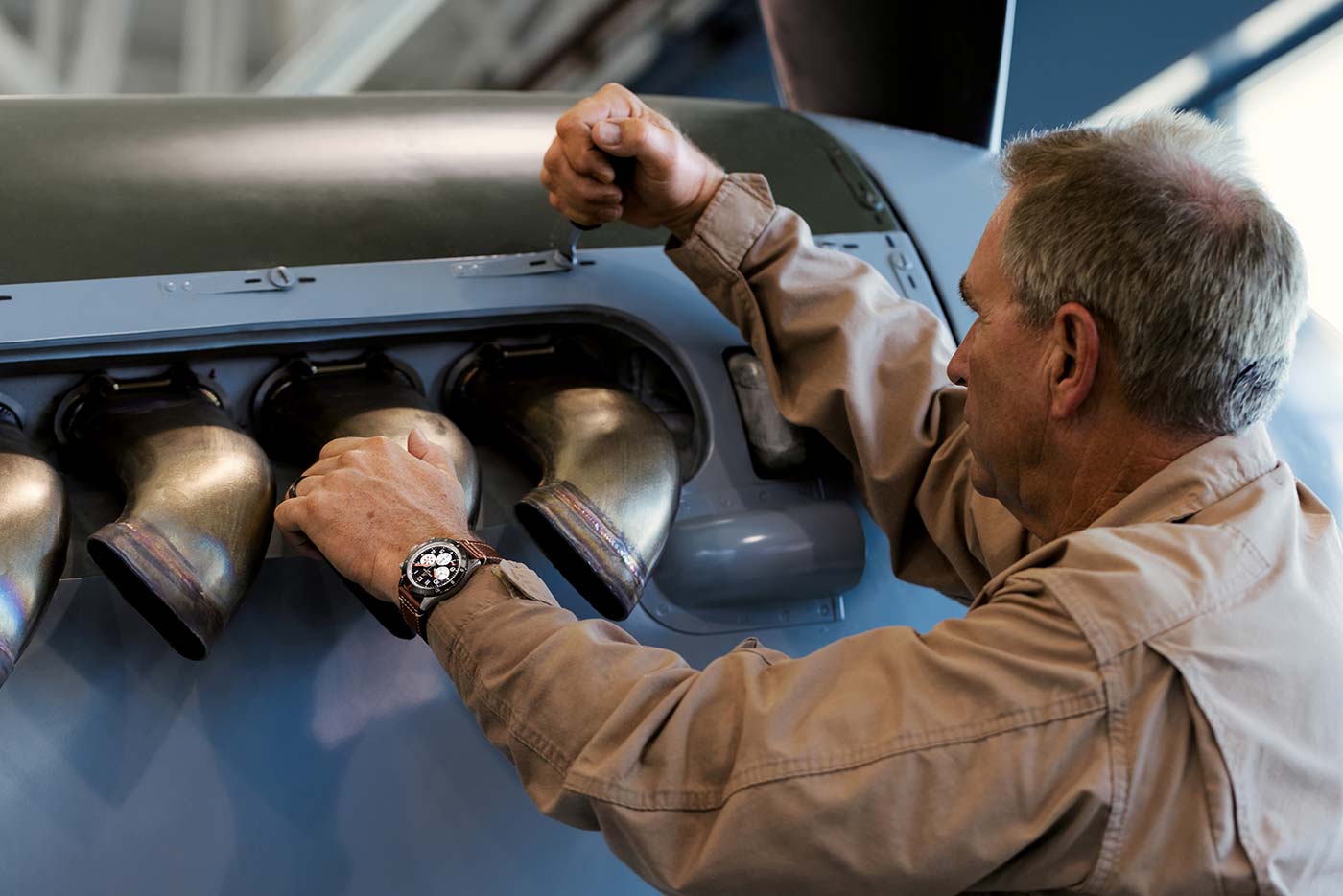
Conceived as a pursuit aircraft, the Curtiss P-40 Warhawk first flew in 1938 and quickly proved itself as a master of agility. It wasn’t just the plane’s capacity for pulling jaw-dropping turns that gave it an in-flight edge, its robust structure meant it could tolerate harsh weather conditions and even many mid-air collisions. The Warhawk’s defiant shark-mouth nose art sealed its reputation as the rebel of the skies.
Taylor Stevenson is a second-generation warbird pilot who soloed at 16 and restored his first warbird at 18. When not working as an attorney, he flies vintage military fighter aircraft at airshows across the United States.
BREITLING
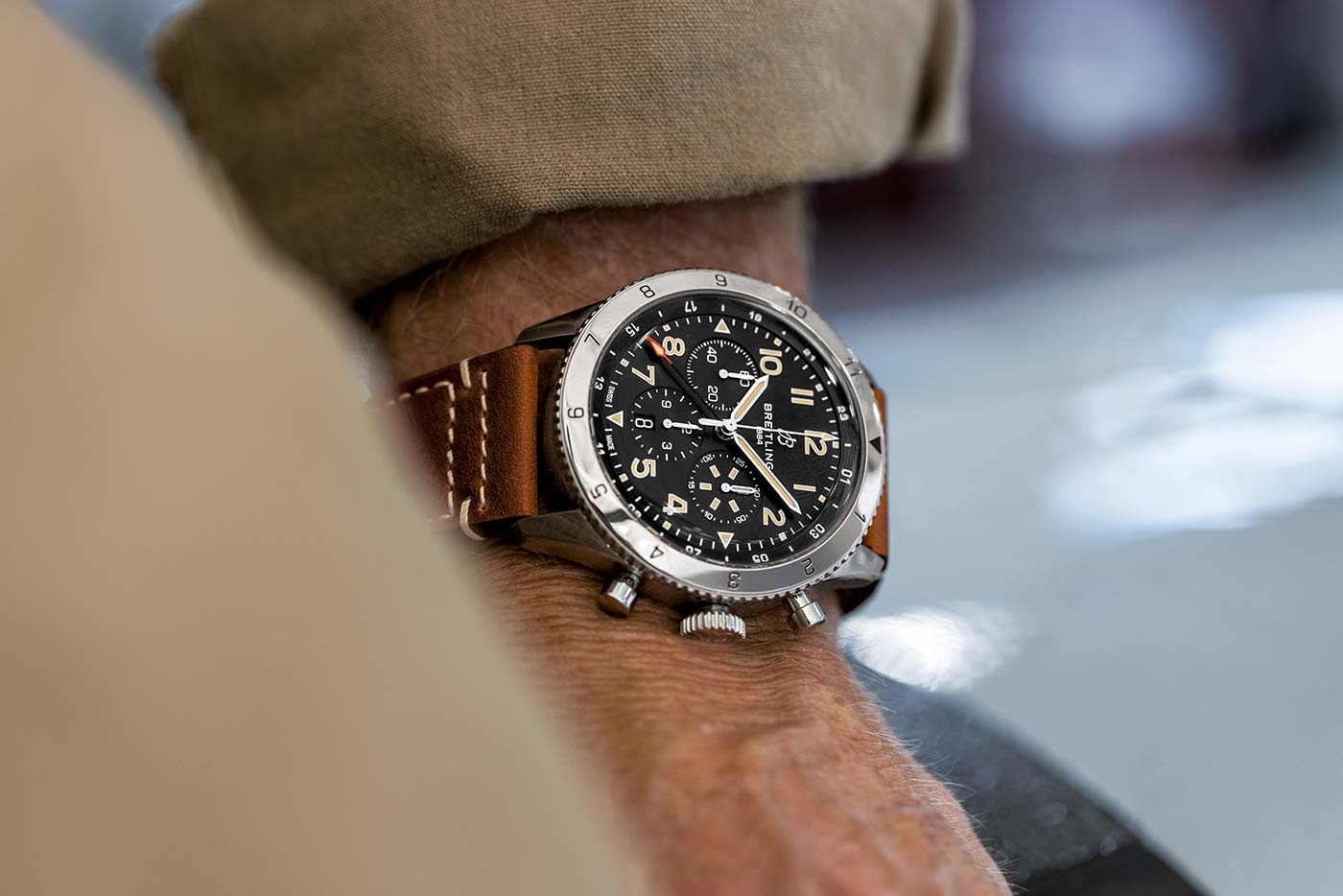
Since 1884, Breitling has established a global reputation for high-precision timepieces, its pioneering role in the development of the wrist chronograph, and its uncompromising commitment to design excellence. With the brand’s storied association with aviation, Breitling has shared the finest moments in humankind’s conquest of the skies. Renowned for its spirit of innovation, it has also earned a place of privilege in the worlds of science, sport, and technology. Breitling manufactures its own movements in-house and the quality of every one is – like the movements in all Breitling watches – confirmed by its status as a COSC-certified chronometer, made in Switzerland.
ADDITIONAL INFORMATION
DOWNLOADS
All press material can be downloaded free of charge at
https://press.breitling.com/super-avi-campaign-bts
FURTHER INFORMATION
ROMY HEBDEN
Head of Corporate Communications
BREITLING SA
Léon Breitling-Strasse 2
2540 Grenchen
Switzerland
Telephone: +41 32 654 54 54
Mobile: +41 79 731 90 28
E-mail: romy.hebden@breitling.com
Check our website at www.breitling.com
INTERNET AND SOCIAL MEDIA
Web www.breitling.com/zz-zz/watches/classic-avi
Facebook www.facebook.com/breitling
YouTube www.youtube.com/breitling
Twitter www.twitter.com/breitling
Instagram www.instagram.com/breitling
Pinterest www.pinterest.com/breitling

